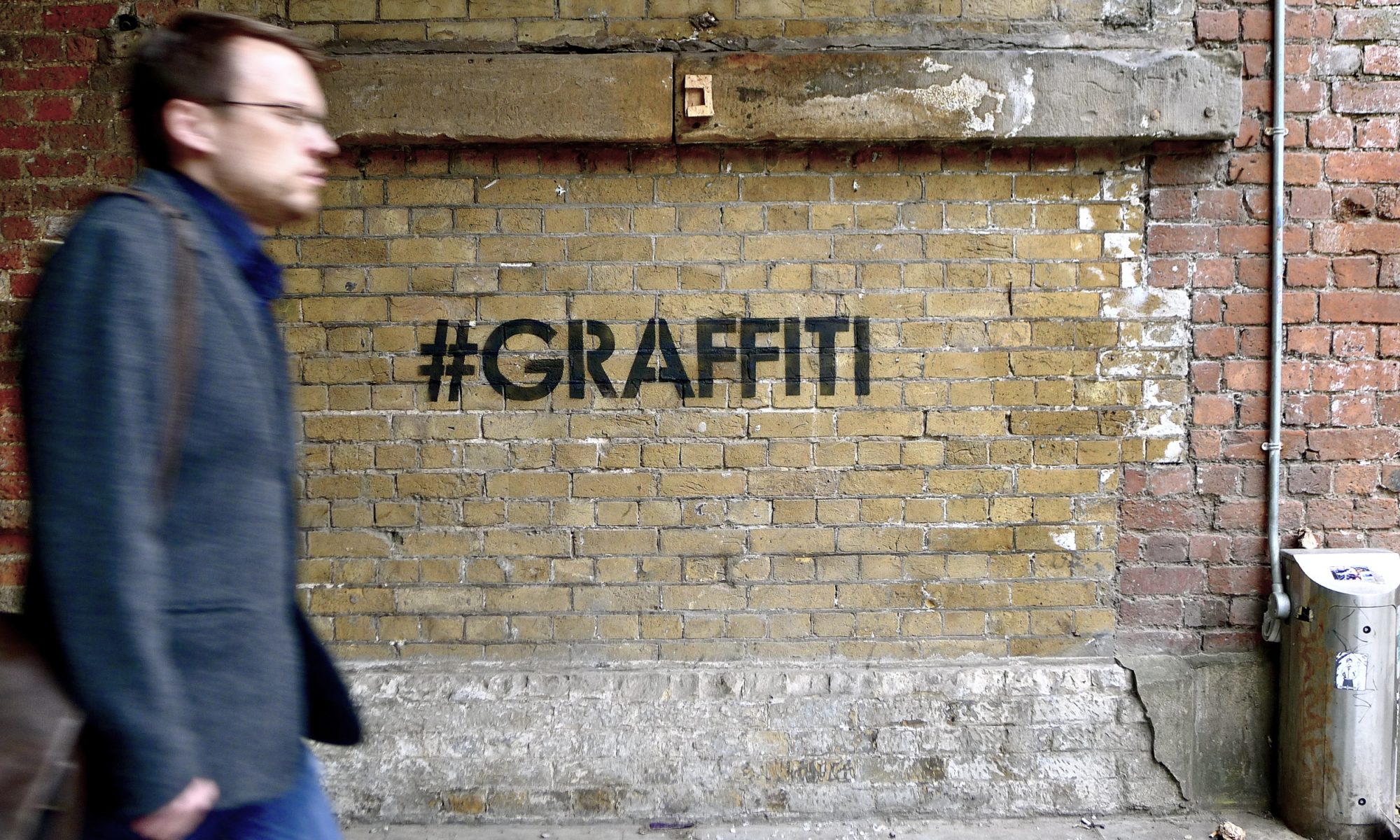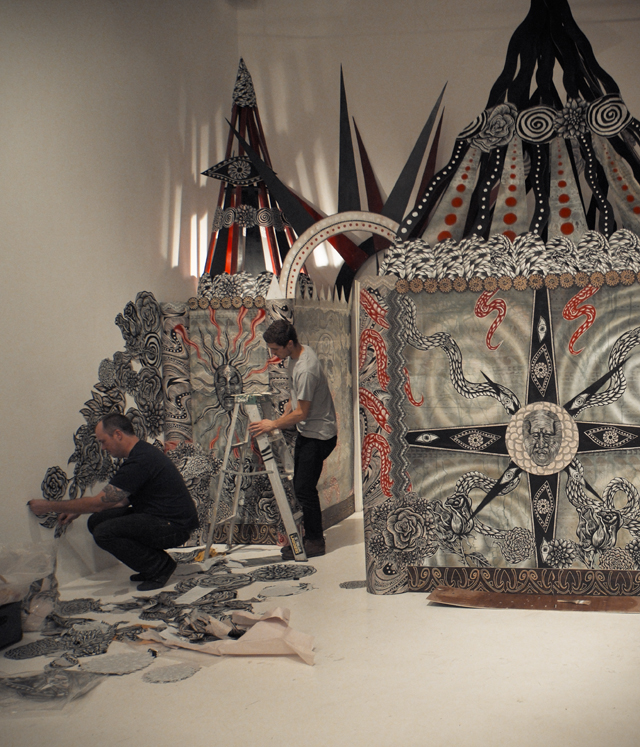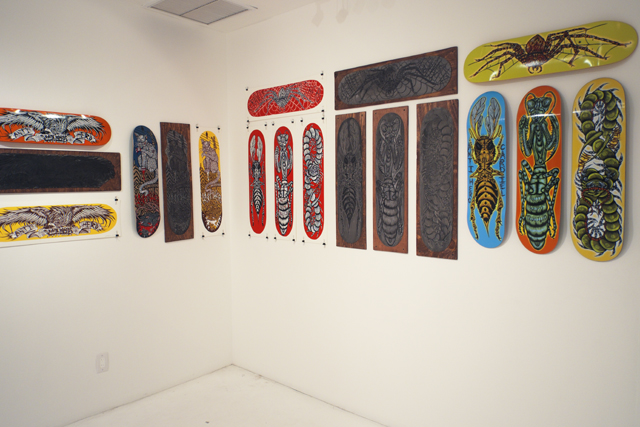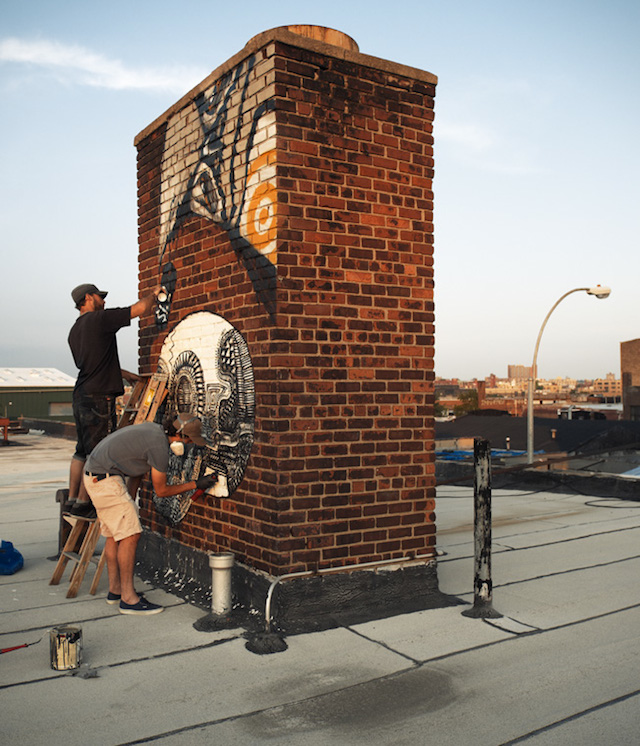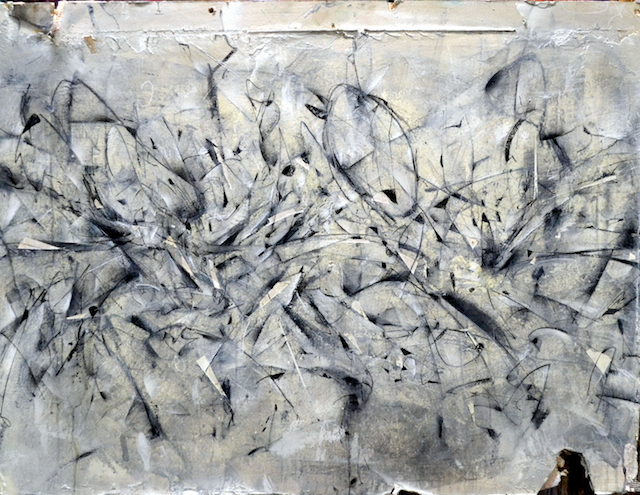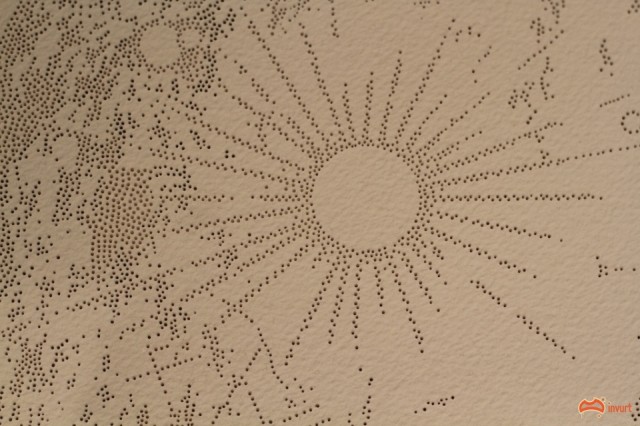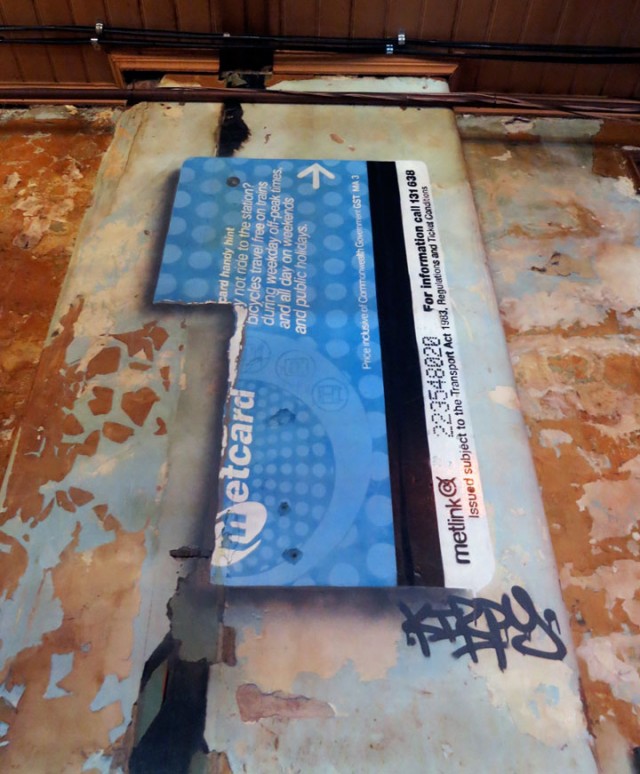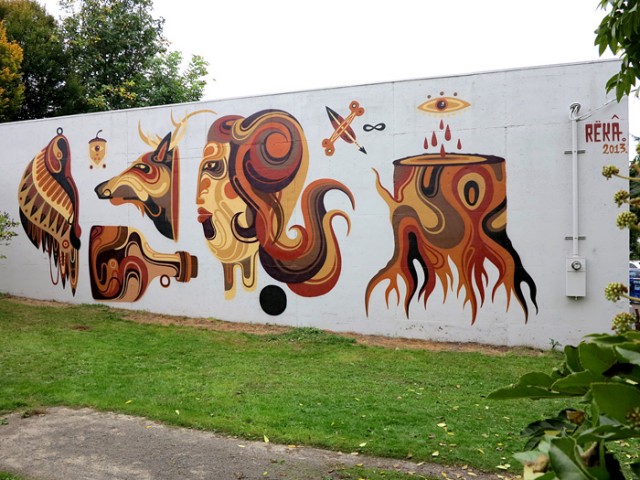
On Tuesday afternoon, Fine Art Auctions Miami (FAAM) will be hosting an auction that includes pieces by Banksy, Faile, Kenny Scharf, Bambi, Aiko and Terror161/J.SON that have been pulled (sawed, ripped, unscrewed, hammered off, etc.) from the street and brought to the auction house in Miami. Two pieces from Banksy’s recent NYC residency “Better Out Than In” are up for auction, including a car door from the Crazy Horse installation, and the bandaged heart balloon. You can have a look at the full catalog here (warning: it’s a PDF) or go here to follow the auction live.
Some of you might be thinking “Hey, those were for the public to enjoy!” or “Why should an unaffiliated auction house profit from the work/legal risks of these artists?” Good questions. But consider this… Who wouldn’t want to enjoy a literal piece of New York City from the safety of their home?
Ethical qualms aside, FAAM contacted Vandalog with an opportunity that we just couldn’t pass up: An interview with the auction house’s official “street art expert” Sebastien Laboureau of Moonstar Fine Art Advisors. Since many published authors and curators with extensive knowledge of street art and graffiti still don’t consider themselves experts, I decided to see what I could learn from a real street art expert…
Caroline Caldwell: At what point would a street artist be considered a ‘sell out’? If possible, provide examples.
Sebastien Laboureau, Street Art Expert: Art has a market, and street artists also sell their works, as long as artists stay true to their personal style and create from their hearts the concept does not apply. Recently many works from street artists sell at auctions, and in galleries because this art is contemporary and talks to a wide audience and public. Banksy is the leading street artist, and he sells hundreds of works everywhere in the world every year at increasing prices.
CC: The Banksy’s “Bandaged Heart Balloon” from her residency in New York City is a portion of the wall that was physically removed and transported to Miami. How do you suggest or imagine people display large pieces like this in their homes?
Expert: Street art is amazing in the way that there is no set medium, street artists can work on canvas, metal, walls, doors. The beauty of it is to keep it in its original medium, we find that collectors enjoy buying and displaying street art because it feels like the work is created in their home.

CC: How much of the art available in this auction was actually relocated from the street to the auction house?
Expert: Quite a few came directly from the streets, including two Banksy walls, a metal roll down gate by Kenny Scharf, and another large security gate by Lady Aiko & Terror 161. The great thing about these works is most of them were created in the street and will live a second life now. They will be preserved for eternity.
CC: If a street artist paints work on a canvas, should it be considered ‘street art’ or just ‘art’?
Expert: I do not feel the need to differentiate between the two, all is art, street art is art regardless medium it is created on.
CC: What is the difference between a ‘street art’ and a mural?
Expert: Street art is a style of painting and a mural is large scale work done on a building, one is genre and other is a medium.

CC: Who was the first authentic street artist to refer to themselves as a “street artist”?
Expert: The reality is that street art has always been around us. Some say street art was born in the late 70’s in New York City through graffiti art in public places. Some called it vandalism, some are still calling it vandalism… THIS IS ART!
CC: Should street artists in New York have NYC at the end of their Instagram handle?
Expert: Street artists should have any handle they please, to show where they have come from or where they are working. New York City is very active in street art, but Miami has also become a street art mecca, with so many murals painted over the past year with an incredible quality and concentration in the Wynwood District. Street art is everywhere, in the London suburbs, in Barcelona, Paris, everywhere! And even in museums now.
CC: Would it be advantageous for street artists to align their personal brands with current trends in urban wear?
Expert: Historically, street art has been linked to hip hop. Fashion has always been intertwined with art. There is no limitation into what can and should be done!
CC: Is illegal street art graffiti?
Expert: It is still illegal in many parts and areas of the world, but more and more artists have been granted areas where they can create their works. Art is above any law, as art is life! Art pertains to our everyday life, and everywhere I look when I see art I see beauty.
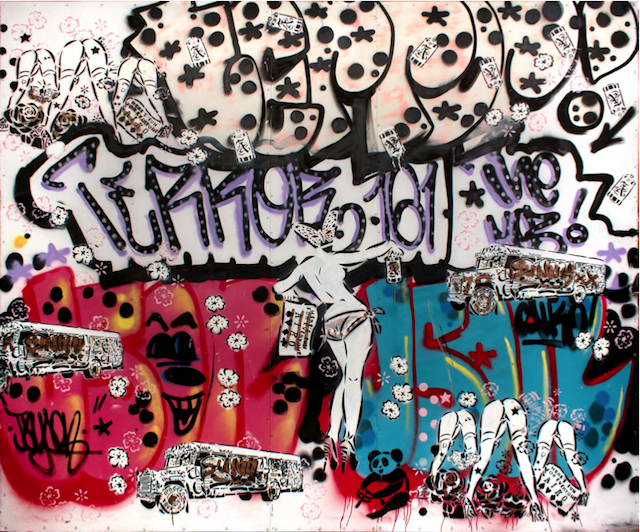
CC: Should there be a different word for street artists who are female?
Expert: There are more and more female street artists. We have great examples at our auction including Bambi and Swoon. Swoon has a museum show set-up in the Brooklyn Museum in April. Kazilla is a very talented street artist from the Wynwood who will be showing works and has brought local street artists together for the exhibition. There are many others! Once again, it makes no difference! ART IS ART!
CC: How long do you need to do the street arts before you’re considered a street artist?
Expert: There is no lead-time. A street artist is an artist that happens to use the streets as their canvas, there is no school. Some artists are better than others, but once again, there is no diploma to become a street artist!
CC: What’s the best city to get blog coverage in?
Expert: Miami is now becoming the street art mecca! But street art is everywhere in the world now.
Photos courtesy of Fine Art Auctions Miami (FAAM) and photo illustration by RJ Rushmore, featuring photos courtesy of FAAM and by Bart Speelman
